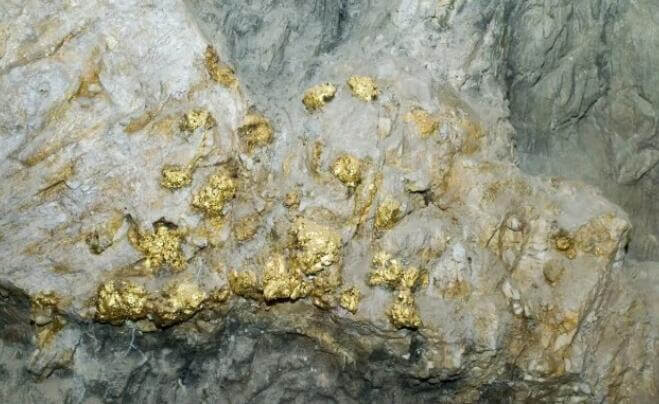The so-called refractory gold ore refers to that ore that can not obtain a satisfactory gold leaching rate after being ground and leaching directly. Generally, the leaching rate of cyanidation stirring is 80% as the limit, and those below this value are refractory gold ore.
The reserves of refractory gold ore account for 60% of the world’s total gold, and our country is not lower than this figure. With the deepening of gold development, the resources of easy-to-handle gold ore are decreasing day by day, and the utilization of refractory gold ore is becoming more and more important. It is reported that about 1/3 of the world’s gold production comes from refractory gold ore, and this proportion will be further increased in the future.

Reasons For The Difficulty in Leaching of Gold Ore
The reasons why gold ore is refractory are various, among which the physical encapsulation and chemical interference of minerals on gold are two important factors that hinder the process of gold cyanidation. Here we mainly introduce the main factors including physical, chemical, and mineral.
Physical Factor
In some gold ores, the particle size of gold minerals is very small (below 1um) and is wrapped by gold-carrying minerals (pyrite, arsenopyrite, chalcopyrite, quartz, etc.) insoluble in cyanide. Even if it is finely ground, the gold cannot be exposed, so the gold cannot come into contact with the cyanide solution during cyanidation. Other gold ores contain a considerable amount of carbonaceous matter, especially organic carbon. These carbonaceous substances are often adsorbed, resulting in the dissolved gold being adsorbed on the carbonaceous substances again, forming the phenomenon of “robbing gold” and reducing the gold recovery rate. In addition, some carbon substances may also form a stable and insoluble complex with the dissolved gold, which may be related to the higher temperature and cyanide concentration required for the desorption of gold-loaded carbon.
Chemical Factor
Gold in many gold mines is often produced with sulfide minerals such as arsenic, antimony, mercury, copper, and zinc and their oxidation products. During cyanidation, these minerals are unstable, and they also interact with cyanide, consuming a large amount of cyanide oxygen and alkali, which affects the leaching of gold. On the other hand, in the process of cyanidation, when metal sulfide minerals come into contact with gold particles, it will also cause the dissolution and passivation of gold and reduce its dissolution rate. To completely dissolve gold, it is necessary to convert conductive sulfide minerals into non-conductive oxide minerals.
Mineral Factor
The gold of some gold mines appears as hoofed gold minerals (hoof gold ore, hoof silver gold ore, hoof antimony gold ore, hoof copper gold ore, etc.), and their interaction with cyanide is very slow. In addition, square gold antimony ore, black bismuth gold ore, etc. are also difficult to dissolve. Therefore, the leaching rate of the ore containing these gold minerals is positively related to its proportion in the ore. The silver-rich silver-gold mine is easy to form a silver sulfide coating layer, which prevents the cyanide solution from entering.
There are many reasons why gold ores are difficult to leach, including the above physical, chemical, and mineralogical reasons. To sum up, there are 5 reasons why gold ores are difficult to leach: 1. Physical wrapping; 2. Side effects of oxygen and cyanide consuming minerals; 3. Passivation of the surface of gold particles; 4. The “gold robbing” effect of carbonaceous substances; 5. The presence of insoluble gold compounds.
In order to obtain a satisfactory gold recovery rate, the reasons for the refractory ore leaching should be found first, and then an appropriate method should be used to pretreat the ore according to the properties of the ore. The quality of the pretreatment effect is directly related to the gold leaching rate, which should be highly valued. There are four pretreatment processes that have been applied in production abroad: roasting oxidation, autoclave oxidation, bacterial oxidation, and wet chemical oxidation. Although there are examples of the application of the roasting method in my country, several other methods are still in the experimental stage, and the gap with the developed countries is not small. In order to rapidly increase the output of gold in our country, the pace of research and development of refractory gold resources must be accelerated.
JXSC Mineral is a professional mineral ore solution and mining equipment manufacturer in China. It cooperates with many clients from the world, including gold, iron, silver, copper, tin, coltan, manganese, diamond, tungsten, etc., If you are finding ores solutions, please contact us.
